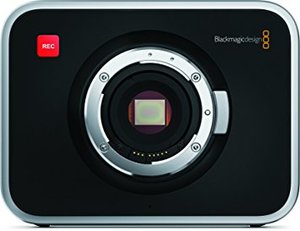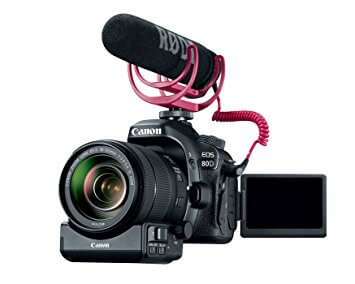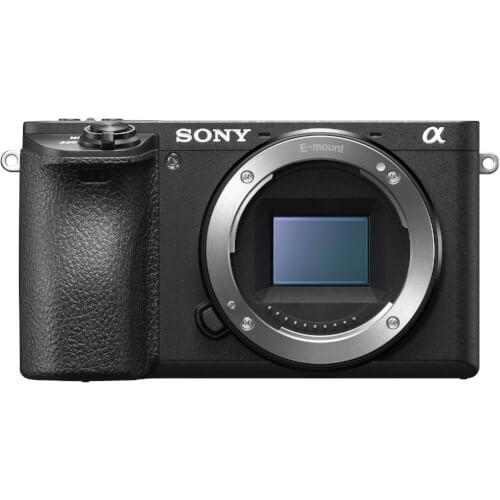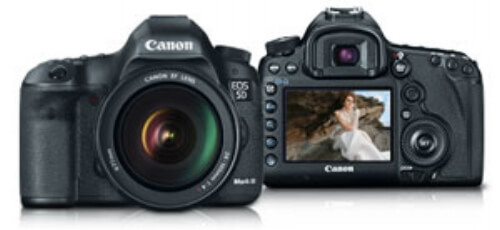Sony a6500 Review – Why Every Director I Know Owns One (Or Three)
In the past year, I’ve noticed how the presence of Sony’s a6500 has been ubiquitous, and thought it’s a good time to write up a detailed review on the best mirror less camera from Sony.
Check pricing and availability here.
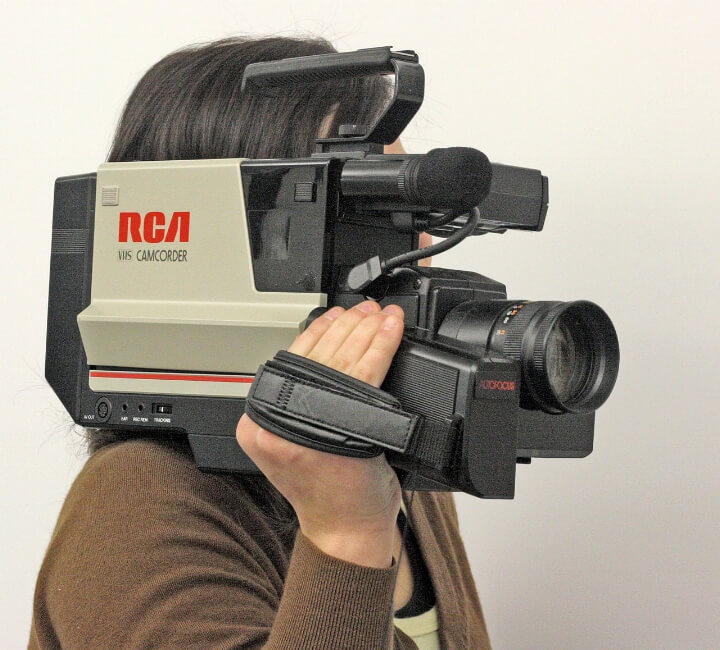
In my guide for DSLR cameras, some have mentioned in the comments that the Sony cameras are not really DSLR cameras. Yes, I admit I made a boo boo there. Ignoring the specific technical details for a moment, I always viewed DSLR (DSLR type cameras) as easy-to-carry options that replaced bulky cameras like this bad boy here:
Hence, whenever I mention the Sony A7Sii or the a6500 or any other “mirror less camera,” I’m talking about game changing cameras that have the following traits:
- Compact built and perfect for upping your photography game and revolutionizing your indie game, allowing you to compete with “the pros.”
- Low cost entry compared to the bad a$$ (and pricey) cinema cameras.
In essence, one can argue that mirror less cameras are an evolution of the DSLR revolution. But if you really want to be techie about it, wait for my article on DSLR versus Mirror less or check out this article from Techradar.
Back to the Sony a6500. This piece of equipment is a great example of why I think mirror less cameras is an advanced version of a typical DSLR camera. DSLR cameras are typically chunky (but still smaller than most Arri Alexas) and shoot amazing HD video.
Sony improved upon these features:

- The a6500 is so compact it fits in your palm.
- It saves a ton of space in your bag (see my a6500 kit in image)
- Shoots 4K at 8-bit 4:2:0 internally
What does this mean? The Sony a6500 is a step up from the typical DSLR camera. Anyone who edits know how awesome it is to shoot at 4K and output to HD. If you use the HDMI output, the a6500 can even shoot at 8-bit 4:2:2 in Rec 709, S-Log2 or S-Log3. Thus, your footage will have amazing dynamic range when you get to post production.
The company’s top-tier APS-C mirror less model, Sony a 6500 is a 24 MP still and video camera. The in-image body stabilization and touch screen capability are two amazing features that are added first time in this series. Greatly enhanced buffer is another added feature which makes this camera a tempting proposition for shooting action.
The added touch screen feature makes a big difference in the functioning of the camera. It helps in positioning the focus point or as a touchpad.
Sony a 6500 is amazingly responsive camera. You can shoot burst of images and can review images side by side:
- Build and Handling: Practically identical for its previous model Sony a 6300, Sony a 6500 is constructed from magnesium alloy. The body is made from metal and a few components like battery hatch, power switch and controls are made of plastic. The company has improved the model with a deeper grip so that you can hold it in a better way. The built-in flash and multi-interface shoe are an addition to the electronic viewfinder. The 3-inch screen of the camera remains in an easily adjusted position.
- Autofocus: Equipped with 4D focus system, the camera inherits densest AF system. Sony 6500 includes 425 phase-detect points and 169 contrast-detect AF points. The camera finds focus incredibly quickly with the help of these detection points quickly. Sony 6500 finds the focus in a spectacular way and stay locked in. You will find it equally satisfying while dealing with a variety of objects.
- Performance: The veritable speed demon, Sony 6500 has comprehensive speed processing. While shooting at 35 fps, the camera has a burst shooting buffer of up to 307 JPEGs with the firepower time of 35 seconds. The multi-zone metering system of the camera cannot be tricked by overexposure or underexposure. The auto white balance of the camera does not change instantly and is a bit sticky. The battery draining rate of the camera is pretty much higher. If you are planning to shoot an ultra HD video, you might need to carry extra batteries.
- Image quality: Sony 6500 delivers outstanding results. An amazing camera for stills, the performance of Sony 6500 will amaze you. The images produced by these display a good level of sharpness and contrast. To make images of instant use, the camera does not bring out shadow areas. Both the zoom lens and dynamic range of camera are impressive and never disappoint you.
- Features: Sony 6500 cameras come with 5-axis in-body stabilization. It enables you to capture 4K videos at 4.2.0 internally and 4.2.2 externally over HDMI. To deal with smaller files, full HD video recording is available. Despite all these features, the camera does not have any audio jack. You need to plug in some device to listen the noise.
Shop Related Products

Sony a7S II ILCE7SM2/B 12.2 MP E-mount Camera with Full-Frame Sen…$2398.00$2876.40 (65)
USING CINE SETTINGS, HERE’S ONE OF OUR PAS SHOOTING BEHIND-THE-SCENES FOR THE NEW YORK INTERNATIONAL SCREENPLAY FESTIVAL.
An affordable option to boot, this higher end DSLR keeps you surprisingly well. If you are trying to shoot video seriously, Sony a 6500 is a great option.
Here are the official technical details from Sony:
LENS COMPATIBILITY: Sony E-mount lenses
TYPE: APS-C type (23.5 x 15.6 mm), Exmor® CMOS sensor
NUMBER OF PIXELS (EFFECTIVE): Approx. 24.2 megapixels
ISO SENSITIVITY (RECOMMENDED EXPOSURE INDEX) – Still images: ISO 100-25600 (ISO numbers up to ISO 51200 can be set as expanded ISO range.), AUTO (ISO 100-6400, selectable lower limit and upper limit), Movies: ISO 100-25600 equivalent, AUTO (ISO 100-6400, selectable lower limit and upper limit)
BATTERY LIFE (STILL IMAGES): Approx. 310 shots (Viewfinder) / approx. 350 shots (LCD monitor) (CIPA standard)20
VIEWFINDER TYPE: 0.39 type (1.0 cm) electronic viewfinder (color), XGA OLED
TYPE: 2.95 in (3.0-type) wide type TFT
Sony a6300 vs. a6500 Comparison
One of the best values out there is to get a used a6300. But if you are looking to save in costs, it might be even better if you just rent the camera and use the cash to get a cool set of lenses.
But if you’re set on buying a camera (and deciding between the a6300 vs. the a6500), here’s a quick comparison:
Sensor stabilization capability
Sony has in the past effectively incorporated a built-in stabilization feature for sensors as can be seen in the architecture of the A7 lineup of cameras so it came as a huge surprise that the a6300 did not follow in their footsteps.
Probably after a significant number of raised eyebrows, Sony moved to rectify the situation by releasing a new make i.e. the A6500 that now comes with a state of the art in-body 5-axis sensor. What this means is that it makes up for camera shakes in 5 different directions e.g. horizontal angle rotation, vertical angle rotation, horizontal shift, vertical shift and rolling camera shake.
This 5-step allowance is achieved by a gyro sensor which enables operation at minimum camera shake and in low light conditions and at slow shutter speeds. This feature is compatible with all EXIF data transmitting E-mount lenses. With lenses devoid of electronic contracts, 3 axes can still be used excluding the two axes on the lens. That said, with an a6300 alone, image stabilization is not possible unless you use an OIS-equipped Sony lens.
Added LSI chip on the front
The two models share similar traits in regards to sensitivity range, technology and sensor resolution although the a6500 boasts a welcome new addition i.e. a front-end LSI chip. With this feature comes not only improved internal processing but also two other advantages as outlined below:
- The LSI chip is accompanied by an adept processor engine dubbed the BIONZ X which, going by the company’s proclamation, betters the ISO aspect of videos and stills alike.
- Secondly, there’s a notable upgrade in the continuous shooting mode buffer. The a6300 was able of capturing 21 JPG & RAW/ 21 RAW/ 47 fine JPGs/ 44 Extra Fine JPGs in burst but the a6500 beats those stats with specs of 107 RAW/100JPG & RAW/ 269 Fine JPG/ 233 Extra Fine JPG in a time averaging about 35 seconds.
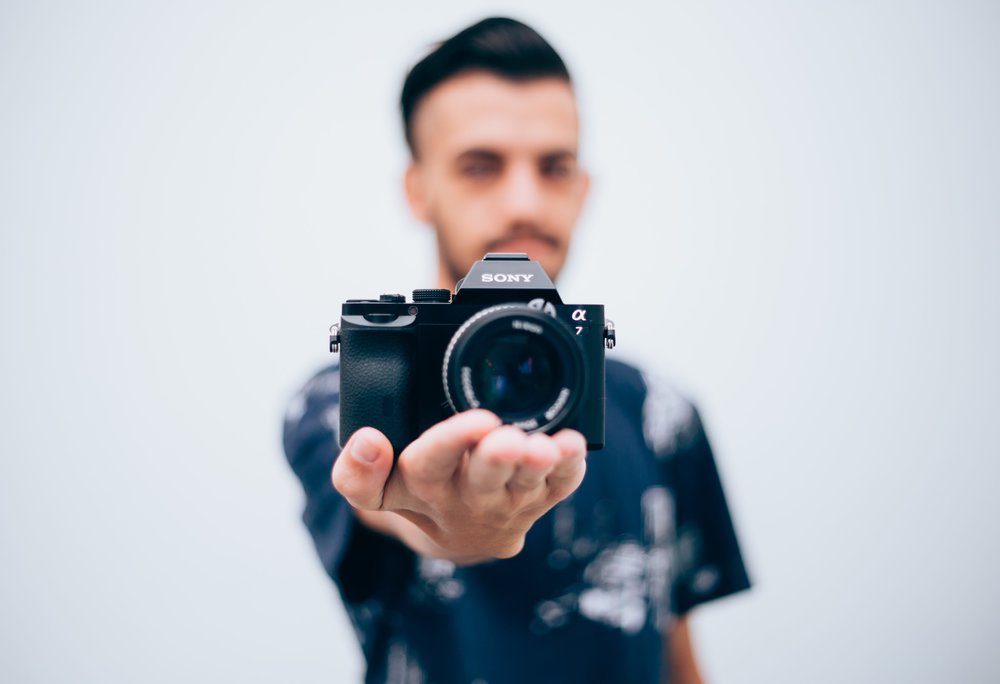
PHOTO BY KAIQUE ROCHA FROM PEXELS
Imbued with touch sensitivity
It’s been a long time coming and it’s now a reality that Sony finally has a camera with a touch-responsive interface. Apart from the a5100, the a6300 and every other E-mount variation of Sony doesn’t have a touch-sensitive LCD so this is definitely a notable upgrade that sets the two further apart.
Using dials and buttons to intricately balance the focusing scale is now a thing of the past as the a6500’s touch navigation can be used to effectively and comfortably tune picture focusing and taking. What’s more, this feature can be used even with an electronic viewfinder.
Slow and quick Mode
The HRF mode of the a6300 enables you to record footage at 24/30p and shoot at 120/100 fps but it doesn’t have a “quick motion” capability. The a6500, on the other hand, has both a slow and quick mode enabling 50 Mbps Full HD high-quality quick motion of up to 60x and a Slow Motion speed of up to 5x. In a nutshell, this means that post-production footage editing is not necessary when it comes to in-camera playbacks showing slow or quick motion results.
8 MP still extraction from 4K video
Previously, that is with the a6300, recording a movie while also simultaneously taking a still was a concept out of bounds. Still extracts can only be obtained via post-production software and with a Full HD or 4K footage. The a6500 has alleviated the need for a third-party bridge by enabling extraction of Full HD and 4k footage directly into a storage location within the camera. The file sizes of such formats translate to about 2MP for Full HD and 8 MP for 4K.
Better shutter operation
The shutter mechanism has also been revised and the a6300’s significantly noisy mechanical shutter has been improved. The a6500 is equipped with better shock absorption material and new braking features at the rear shutter’s end and these two attributes make for a quieter shutter operation.
Connection prowess
The a6500 is embedded with Bluetooth connectivity that makes location data acquisition with a mobile device possible. It also has NFC and Wifi capabilities alongside a QR code that allows Smartphone paring without NFC. Moreover, Remote Camera Control enables dual saving on the SD card and on your computer as well. What’s more, it’s possible to transfer only JPGs as opposed to JPEG+RAW which was the case with the a6300.
User interface improvement
Complex user interfaces are often a problem synonymous with Sony, but the company has made steps in the right direction with the smooth new menu for the a6500. It is now easy to navigate menu settings which cannot be said for the a6300. This new system is much more organized in comparison.
Design upgrade
A side-by-side view of the Sony a6300 vs a6500 shows that much of the camera’s exterior has still been retained including the familiar left-sided EVF, the flat-topped physique, weather resistance, built-in flash, mode dial and rear control dial. A closer look, however, reveals a few alterations.
The successor’s body now includes a recessed grip for better handling, 10 custom buttons compared to the 9 of the former (encompassing a rear-positioned C3 button and two C1/C2 buttons on the upside), a bigger shutter release button and a softer eyecup. This new architecture is heavily inspired by the A7 full-frame lineage. Also, general mode operation and rear and control dials placement has been improved.
AWB priority setting and added metering modes
An updated Auto White Balance which makes the best of situations of incandescent lighting enables you to select the suitable color tone preference between white, ambience or standard choices. Another minor yet significant arena where the a6500 betters its counterpart is the pair of new metering modes. These include the ntire Screen Avg.’- which works to find the optimum metering for the whole image- and the ighlight’ which ensures good highlights by taking care of those frame areas with a lot of lighting.
It should now be clearly evident why the Sony a6500 emerges victorious in this Sony a6300 vs. a6500 battle. It builds on the already commendable attributes of its cousin and irons out some of the kinks in the armor of the a6300.
Why Every Director Owns a Sony a6500
Now, that you know the specific details of the a6500. Let me tell you why it’s one of the most popular cameras on the film set.
In the indie filmmaking game, it’s always important to market yourself and the upcoming movie. Directors and producers spend hours and hundreds (sometimes thousands) of dollars promoting their up-and-coming movie. One of the best ways to promote a movie is showing behind-the-scenes footage:
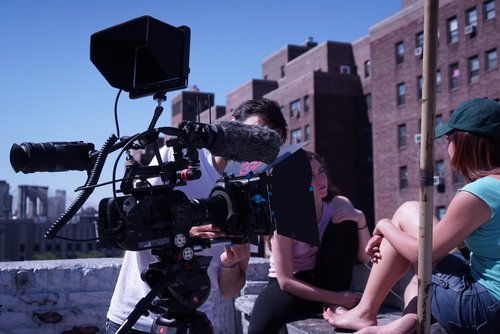
Behind-the-scenes shots from a film shoot in NYC


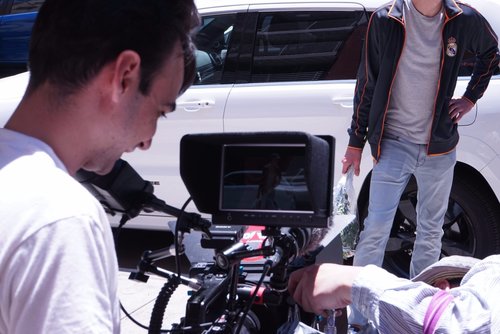
- Setting up the film location
- Getting to know the actors and the production crew
- Behind-the-scenes interviews
These candid videos and photos are then shared via Facebook, Tumblr, Instagram, Snapchat and a host of other social media services. This creates a teaser for the film, and helps build interest in the film project.
What I’ve found is the Sony a6500 is perfect for behind-the-scenes candid photos. The key to candid photographs or video making is having the ability to quickly pull out a camera and shoot that magical moment (which could only last a few seconds).
Perhaps after a long day of shooting, the actors and production assistants all of a sudden decide to do an impromptu Harlem Shake. With the Sony a6500, one of your PA’s could easily be carrying one and take photos of it.
Sometimes these candid moments can go viral on Social media. That’s what makes filmmaking so different in 2017 versus the 1950s or even the 1980s. You don’t need a formal, million dollar trailer to promote your film.
Just do what I do and what other indie filmmakers have learned – use social media! Give one or two of your production assistants one of these small and compact cameras and instruct him or her to take candid photos and videos of cast and crew.
Slowly drip post this content on Twitter, Facebook and Instagram and build that social media following. In today’s marketing world, the power of social media can go a long way to promoting your film project.
Why Every Serious Youtuber Owns a Sony a6500
One of the most popular ways for self-promotion or creating content on a Youtube channel is the use vlogging or video blogs. Now, an iPhone or even one of the Samsung phones can nowadays shoot really good 4K video.
But sometimes that is not enough and a Youtuber who makes and posts videos for a living would want the next best thing. This is when they turn to the Sony a6500.
Youtubers are notorious at impromptu filming. This is why many viewers, like Youtube. It could be shopping at Walmart. It could be kids break dancing in Central Park. It could be finding Elvis Presley riding the Number 7 train. The Sony a6500 can fit into a coat pocket and can easily be pulled out to take spur-of-the-moment videos of photographs.
The Sony a6500 is perfect for candid shots (both photos and video), as previously mentioned. Moreover, it shoots in 8K slog-2 or slog-3. Serious Youtubes often have top-tier editing programs like Adobe Premiere and/or Photoshop. The Sony a6500 allows them to take flat footage and pretty them up with their fancy editing program.
The Sony a6500 is also easy to use for official vlogging segments. With it’s compact build, you can easily afford a decent cage and outfit it with Rode mics and other accessories to up your Youtbue game.
The Sony a6500 is easily the best and must-own camera for Youtube videos.
A Review of How a Sony a6500 Can Up Your Event Videography Game
In this article on videography tips, I elucidate the importance of run-and-gun shooting style in a wedding videography gig. This is important in any live event:
- Concerts
- Birthday Parties
- Corporate Conferences
- Bachelor Parties
These are types of videography that require spur of the moment decisions from the cinematographer. With traditional filmmaking, you have shot lists and weeks of preparation to get the right shots. With any event videography, the cinematographer has a split second before they could lose that magical shot.
It could be an impromptu chicken dance from one of the groomsmen. It could be the bride and groom, deciding to break dance for their first dance.
Most of the time, event videographers will stick a camera on a tripod in the corner and get a good wide angle shot of everything. This is definitely a good idea to get full coverage for the editor in post production.
However, it’s the same as getting up close to your subjects. Up close, you’ll get facial reactions and very nice bokeh. With a camera in the corner, you’ll get the full view of the room but you’ll miss the personal and human element when you get up close to your subjects.
This is why I prefer my second and third shooters in any event videography to have either a Sony a6500 or a Sony A7Sii. These “floater shooters” can walk around the crowd and take up close footage of the people in the room. When combined with the wide angle shot from the camera in the corner, the editor will have a ton of coverage to choose from. He/she can go wide or go up close, if you ensure you get full coverage of the event.
What I also like about working with these Sony cameras is this: it’s easier to create consistency in post-production. Since both the Sony a6500 and the Sony A7Sii come at affordable prices AND they both can film in similar styles (i.e. slog-2, slog-3, Cine), it’s much easier to match shots and ensure consistency in the final video.
Finally, you can’t end a review of Sony’s mirror less lens lineup without mentioning the low light capabilities. The Sony A7Sii is still the best low light camera, but the a6500 is not that far behind. Check out this test on the a6300 which is the predecessor to the a6500:
Even if you can’t afford two Sony mirror less cameras, it’s so cheap to rent one out. It’s usually a cheap rental – $70 at Kitsplit and good for the weekend.
Conclusion of Sony a6500 Review
To recap, although technically not a DSLR camera, the Sony a6500 is a step up from the DSLR camera market. It offers a more compact build than the typical DSLR camera and offers 4K video making capabilities. It allows the cinematographer to shoot in 8-bit 4:2:0 internally or 8-bit at 4:2:2 with an HDMI output. The slog-2 and slog-3 settings are some of the best settings for capturing flat footage.
After all that techie mumbo jumbo, what you should really know about the a6500 is how you can use it in your filmmaking work flow. For beginner filmmakers, it’s a great introduction to Sony’s mirror less camera lineup. As long as you have the right glass and the right story to tell, then the Sony a6500 is more than capable of putting your words into real life images.
Even if you already have an Arri or the FS7, the a6500 also words well on any film set. It allows for candid, behind-the-scenes coverage. This is especially important if you use social media to promote your project. It’s a perfect camera to give your PA’s to shoot behind-the-scenes photos and videos for your Facebook, Instagram, Snapchat and Tumblr blogs.
The a6500 should be a staple for any serious videography business owner. The compact build and powerful features allow the videographer to get up close to their subjects. The key to event videography is mobility, a quick eye and quick fingers to capture the spur of the moment. The a6500 is great for enhancing the coverage depth and will certainly enhance your videography game.
Finally, the Sony a6500 is probably the best camera for Youtube. It’s a step up from the typical DSLR camera. It’s perfect for spur of the moment filmmaking to capture break dancing in a Walmart store or Bob Marley singing a tune on the G Train to Willyburg. It’s great for vlogging. Plus, I’ve already mentioned how it’s great for anyone looking to up their social media game by posting unique and quality content in the form of videos and photos.
Check pricing and availability here.
Thank you for making it this far into this comprehensive review of the Sony a6500.
2Bridges Productions Copyright © 2017. Address: 25 Monroe St, New York, NY 10002. Phone: 516-659-7074 – All Rights Reserved.
We are a participant in the Amazon Services LLC Associates Program, an affiliate advertising program designed to provide a means for us to earn fees by linking to Amazon.com and affiliated sites.




